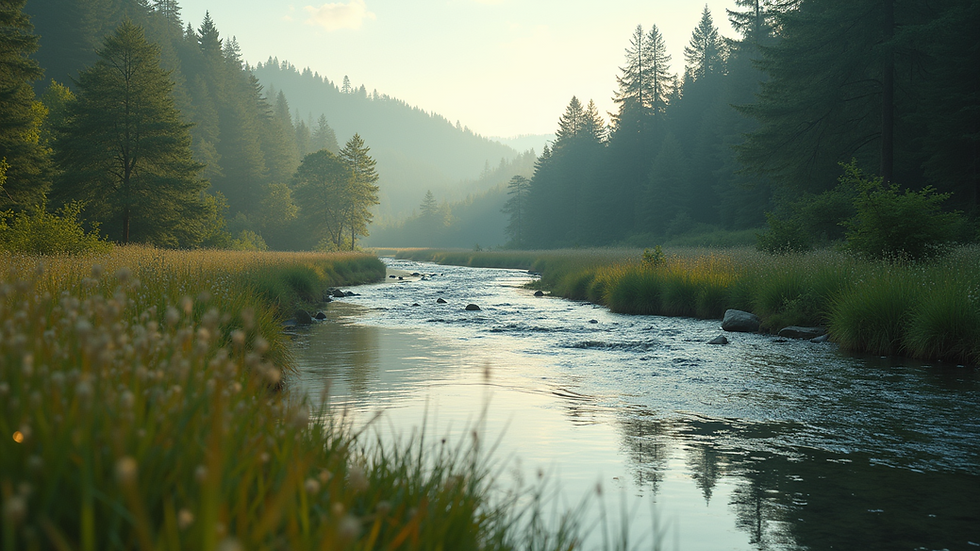Crafting Compelling Narratives: Telling Your Story Through a Video Lens
- APICO

- Aug 28
- 4 min read
Updated: Aug 29
In a world where high-quality visual content is everywhere, learning to tell your story through video is a vital skill. Whether you are an aspiring filmmaker, a social media influencer, or just someone wanting to share a personal tale, mastering video storytelling can take your narratives to the next level. This blog post will break down the core elements of effective video storytelling, providing actionable tips and specific examples to help you create videos that truly engage.
Understanding the Power of Visual Storytelling
Visual storytelling transcends simple images; it communicates emotions, ideas, and experiences that resonate with viewers. When combined, visuals, sound, and editing create a powerful medium that stirs emotion and provokes thought.
For instance, consider the viral video campaign by Dove that portrayed real women of all shapes and sizes. This campaign combined visuals with heartfelt narratives, resulting in a 30% increase in sales and significant brand engagement. Telling your story through a video lens allows you to connect with your audience on multiple levels, making your message memorable.
Defining Your Narrative
Before you even reach for your camera, it's essential to clarify the narrative you intend to convey. Reflect on questions such as:
What message do you want to share?
Who are you speaking to?
What feelings should your video evoke?
Begin by jotting down the core message and themes of your story. For example, if you want to focus on environmental awareness, outline specific topics like recycling, wildlife conservation, or sustainable living. This foundational work will guide you during filming and editing.
Additionally, visualize how to narrate your story. Explore diverse locations that reinforce your message. If your tale focuses on urban culture, consider shooting in lively city spots. If it’s about solitude in nature, opt for serene outdoor settings.
Crafting a Compelling Script
An effective script serves as the backbone of your video narrative, providing a clear structure.
Start by mapping out your story arc, which should include key components:
Introduction: Set the stage and introduce characters.
Rising Action: Present challenges or conflicts.
Climax: Hit the peak moment of tension.
Falling Action: Address the consequences.
Resolution: Wrap up the narrative meaningfully.
As you write your script, focus on vivid imagery and emotional depth. Use descriptive language that engages the viewer's imagination. Instead of stating, “The day was beautiful,” show it: “The sun spilled golden light over the landscape as flowers danced in the gentle breeze.”
Choosing the Right Visual Style
The visual style will significantly influence how your story is perceived. Reflect on the mood and tone you wish to convey and choose a style that enhances this message.
For instance, in a lighthearted narrative about friendships, you might opt for vibrant colors and dynamic camera angles. A more serious story about loss may benefit from subdued colors and slower pacing.
Experiment with various camera techniques. For example, close-ups can capture emotion in characters’ faces, while wide shots provide context, showing the surroundings that shape their experiences. One popular technique is the use of drone footage for stunning aerial shots that can immediately set the tone.
The Importance of Sound Design
Sound design is a game-changer in video storytelling but is often overlooked. The right audio can trigger emotions and build atmosphere.
When selecting music for your video, consider its impact. A study by MarketingProfs revealed that 80% of people remember video ads with sound over those without. Ensure that the music matches your narrative’s tone—an upbeat track can energize, while a softer melody might evoke contemplation.
Moreover, prioritize clear audio for dialogue and ambient sounds. A study by the National Association of Broadcasters found that viewers are more likely to abandon a video if the sound is poor. So invest in a good microphone to ensure your voice is heard clearly and effectively.
Editing for Impact
Editing is where your story truly comes to life. This process involves stitching together footage, sound, and visuals to create a seamless narrative.
Start by organizing your clips and selecting the best takes. Focus on pacing and rhythm; a well-structured video maintains audience engagement. For instance, a fast-paced travel video may captivate viewers with brief, dynamic shots, keeping the energy high.
Don't hesitate to cut out scenes or dialogues that don’t serve your narrative. Each element in your video should enrich the story. If a particular camera angle or shot does not add value, consider trimming it to maintain momentum.
Engaging Your Audience
Once your video is ready for the world, consider how to engage your viewers beyond the play button.
Encourage viewers to share their thoughts or create responses to your video. For example, ask questions at the end of your video. This kind of interaction can build a community around your content.
Utilize platforms that foster audience participation. Hosting Q&A sessions or live-streaming events related to your video can provide valuable insights and feedback. This not only strengthens your connection with the audience but also helps you improve your storytelling for future projects.
Final Thoughts
Creating a compelling video narrative is a powerful tool for connecting with your audience and sharing your unique viewpoint. By understanding the elements of visual storytelling, defining a clear narrative, and effectively using sound and editing, you can craft videos that leave a lasting impression.
Embrace authenticity and creativity. Experiment with different styles and techniques. With practice and dedication, you can assert your voice in the video storytelling landscape and captivate your audience like never before.








Comments